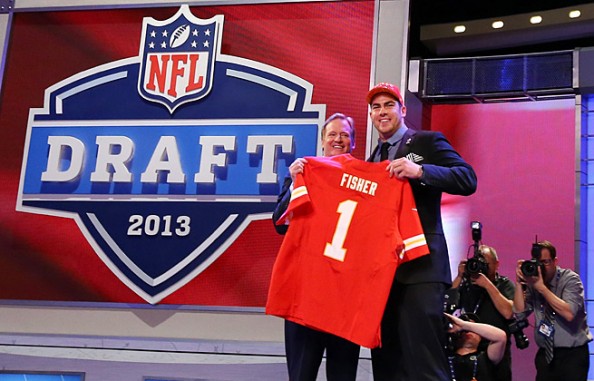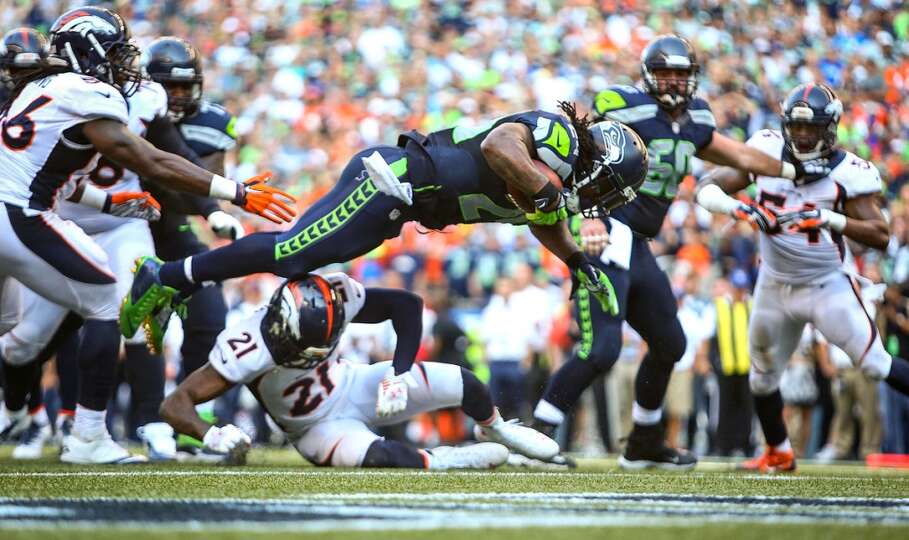
Gary Gilliam is getting a chance at right tackle
“We have to get better”
“We can’t go out there, struggle early in games and take some hits that we don’t need to take”
“We couldn’t wait much longer to do this”
…The words of Pete Carroll today following a concerning opening pre-season performance from his offensive line.
It isn’t usual for a team to have question marks at three O-line positions heading into the second week of a pre-season game. Lines rely on chemistry and understanding to succeed. Carroll’s choice of words above is certainly justified.
This is a concern.
That’s not to say Seattle’s line play has always been flawless. Nevertheless, Breno Giacomini did a better job making the right tackle spot his own compared to James Carpenter and now Justin Britt. After a year of Chris Spencer, Max Unger became the bonafide starter at center. Carpenter, for all his inconsistencies, never appeared truly troubled after switching to left guard.
This year Alvin Bailey hasn’t done enough to nail down a guard spot — despite seemingly being given every opportunity to do so. Lemuel Jeanpierre’s familiarity is being seriously challenged by Drew Nowak’s upside — yet it doesn’t seem either player has really separated from the other.
Now there’s another possible switch in the offing. After a sometimes torrid rookie season at right tackle, Justin Britt is being tried at left guard. Carroll, in his typical fashion, talked the move up as a review of Garry Gilliam’s good play in camp. They want to see him at right tackle. That’s fair enough — they clearly rate and trust Gilliam.
It’s also a move they haven’t tried one single time before Britt’s poor display against Denver on Friday. A lousy attempt to block Von Miller was a steady reminder of his struggles with pass protection. As much as this might be a chance for Gilliam, it’s also a sign that Britt might not make it as a right tackle in the NFL.
The Seahawks found themselves in a tricky spot in 2014. After deciding to go receiver (Paul Richardson) with their first pick instead of an offensive lineman — they left open the possibility they might miss out on the O-line class altogether. It was a somewhat risky move given the superb depth at receiver that year and the minimal riches at tackle or guard.
Having owned the #32 pick after winning the Super Bowl, they traded down twice to #45. Guard Xavier Su’a-Filo went at #33, tackle Joel Bitonio at #35, center Weston Richberg was drafted at #43 and Cyrus Kouandjio at #44. This quartet have had mixed fortunes with the exception of Bitonio — a blog favourite before the 2014 draft. Even so, this constitutes a small rush and diminished the O-line options.
Seattle took Richardson who they clearly really liked and waited until pick #64 to take an offensive lineman. After Jack Mewhort was taken by the Colts at #59 — options were running out. The Seahawks didn’t have a third round pick because of the Percy Harvin trade and pulled off a minor shock when they took little-known Justin Britt (a player many graded in the later rounds).
It seemed slightly desperate. Tom Cable usually hands a list of candidates he likes to John Schneider. It’s apparent that list was running dry by #64 and a reach was worthwhile to land at least one of the names. Britt fit the profile.
Unfortunately it’s at least somewhat possible he’ll be Seattle’s second failed early round pick at right tackle after James Carpenter in 2011.
It’d be easy to use hindsight to second guess the 2014 draft. Bitonio has shone in Cleveland while the likes of Davante Adams, Jarvis Landry and Martavis Bryant have performed well after being taken around or beyond the #64 pick. Richardson’s injury and Britt’s play makes it easier to wonder what could’ve been. The Seahawks don’t have any time for that — and it’s why they’re making these moves.
Britt at guard seems like a much more comfortable fit. His short arms and struggles in space 1v1 will be less extreme playing in-between a tackle and center. Gilliam is a superior athlete with superior footwork and length. He has a better chance to deal with some of the athletes playing edge rush in the NFL.
It’s yet another walk into the unknown though. Can Britt and Gilliam adjust? How alarming is it that the Seahawks are still some way off knowing their best five guys and their best five positions on the offensive line?
Have they done a good enough job drafting for the O-line? They didn’t whiff on Okung or former project J.R. Sweezy — but they missed on Carpenter and John Moffitt. Britt could go either way at this stage.
The uncertainty could linger into the season. They might still be working this out a few weeks in. That’s why I think it could be partially responsible for a possible 0-2 start before a likely ‘worst case’ 4-1 to follow.
The fear is the Seahawks have gone from a functioning if far from elite O-line to an inexperienced, unfamiliar unit lacking in quality.
Hopefully this latest change will provide some stability up front. It’s absolutely necessary and critical if the Seahawks are to start as they mean to go on in 2015.
Another dynamic to consider — the only two somewhat reliable starters (Okung and Sweezy) are both free agents in 2016. If they want to improve the line and avoid further issues in the future, these two might end up being priority re-signs in the off-season.




